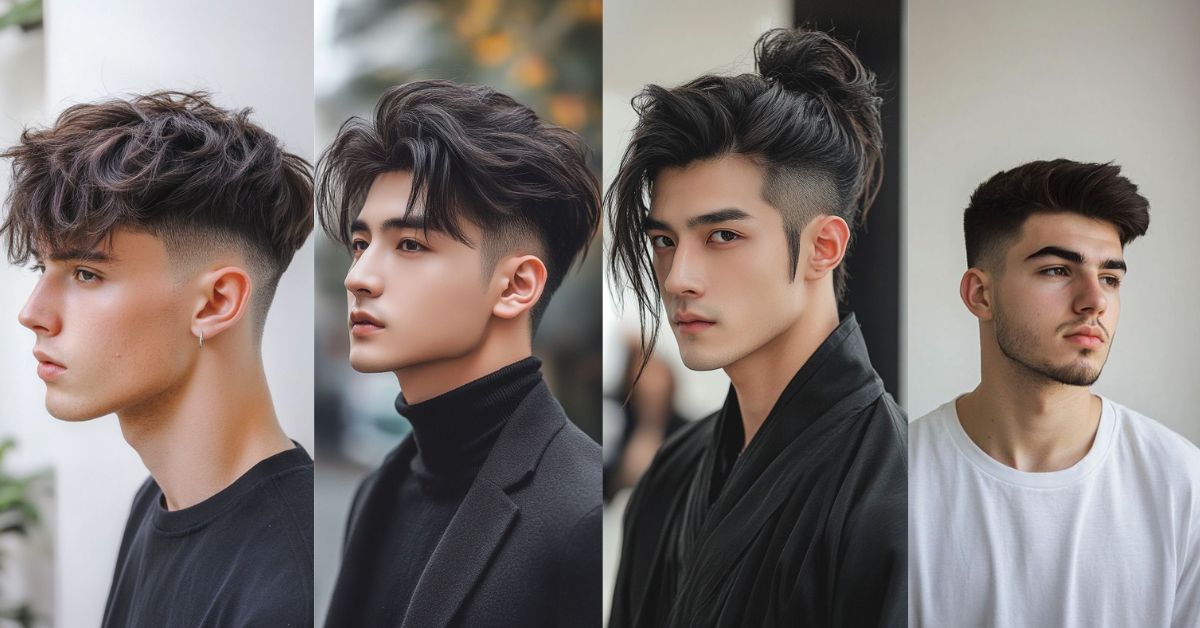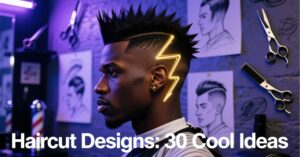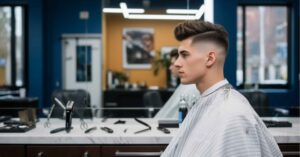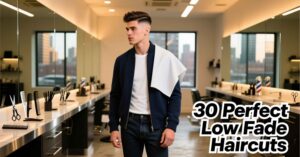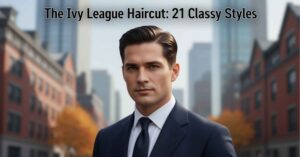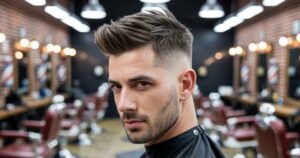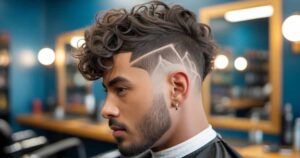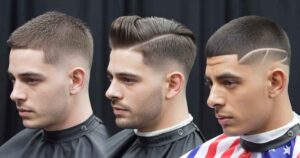Looking for a haircut that keeps you sharp without needing daily fuss? The low taper fade might be your answer. This guide breaks down 15 trending variations, styling tips, and exactly how to ask your barber for the cut you want.
You’ll learn which face shapes work best, how to maintain it, and why this timeless style keeps winning in barbershops everywhere.
What Makes the Low Taper Fade a Timeless Men’s Cut
The low taper fade starts its gradual haircut blend just above your ears and works its way down to your natural hairline. Unlike aggressive skin fades that go down to bare scalp, this cut keeps things subtle with a smooth transition that feels less dramatic. The barbershop precision cutting involved creates a natural finish that looks intentional without screaming for attention.
This haircut works because it respects your natural hair pattern while adding structure. The haircut transition levels move gradually from longer hair on top to shorter sides, creating visual balance in men’s haircuts that flatters almost everyone. Whether you’re sitting in a meeting or grabbing coffee with friends, the cut holds its own without feeling out of place in either setting.
The beauty lies in its flexibility across different hair textures and lengths. Curly hair gets a clean outline that shows off those natural spirals, straight hair gains shape and dimension, and wavy hair flows with enhanced volume at the crown. This adaptability explains why barbers keep this technique in rotation year after year, even as trends come and go.
How to Style a Low Taper Fade Like a Pro
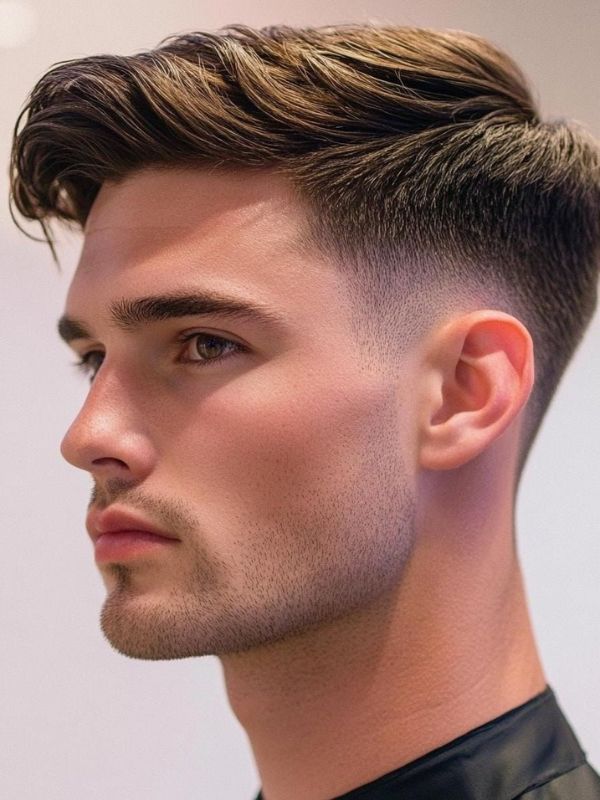
Start with damp hair after your shower, not soaking wet. Towel dry until your hair is slightly moist, which gives products better grip and control. Apply a nickel-sized amount of matte clay or light pomade, rubbing it between your palms first to warm it up and make distribution easier.
Work the product from back to front, then front to back again. This ensures even coverage without clumping or missing spots. For texture, use your fingers to lift and separate sections rather than combing everything flat. The goal is controlled messiness, not helmet head.
Blow drying adds volume if you want height on top. Point the dryer upward from roots to tips while using your free hand to guide hair in your desired direction. For a more relaxed vibe, skip the dryer and let it air dry with the product in place. The taper fade grooming guide approach here is simple: less is usually more with styling products.
Best Face Shapes for Low Taper Fades
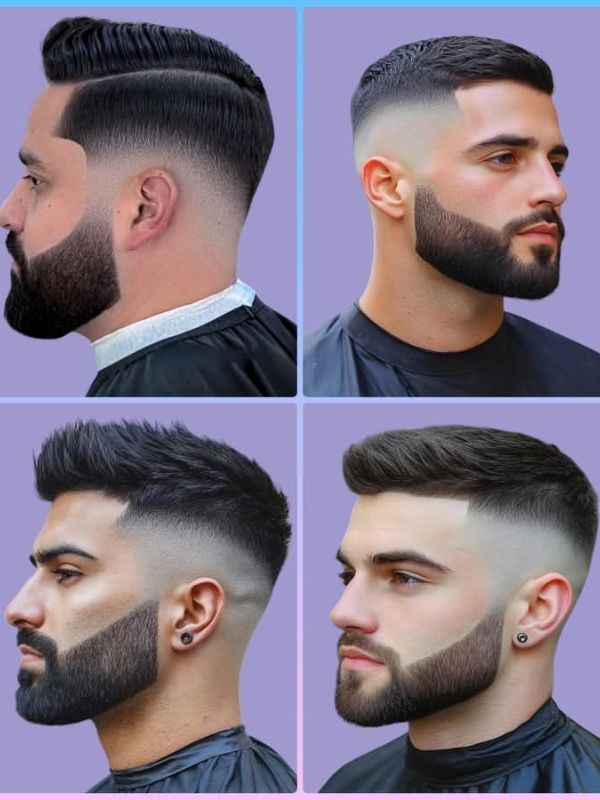
Round faces benefit hugely from this cut because it creates length and draws eyes upward. The tapered sides slim down the overall appearance while the longer top adds vertical height. Keep the top textured and lifted rather than flat to maximize this face-shaping effect.
Oval faces are the lucky ones here since pretty much any variation works. You can go shorter on top for a classic vibe or longer for something trendy. Square jawlines pair beautifully with this cut too, as the gradual blend softens angular features without losing that masculine edge.
Heart-shaped and diamond faces should focus on keeping some width on top. A side part taper fade or textured crop balances narrower chins and wider foreheads. The key is matching your face structure with appropriate length and volume placement, which any skilled barber can help you figure out during your consultation.
Classic vs. Modern Low Taper Fades – What’s Trending
Classic taper fade haircut for men follows traditional barbering with clean lines and conservative length. Think Mad Men style: polished, side-parted, and professional. This version uses minimal product and relies on the cut itself to do the talking. It’s the go-to for corporate environments and formal occasions where subtlety matters most.
Modern takes push boundaries with texture and asymmetry. We’re seeing guys pair their fades with messy French crops, disconnected undercuts, and even tapered mullets that feel fresh rather than dated. The modern men’s haircut ideas lean into personality, using the fade as a foundation rather than the entire statement.
Right now in 2025, the men’s grooming trends 2025 spotlight is on natural texture enhanced by smart cutting. Guys are keeping more length overall while using the fade to create contrast. The broccoli cut with a low taper is huge among younger crowds, while professionals lean toward textured ivy leagues with subtle fades that maintain boardroom appropriateness.
Top Low Taper Styles for Short Hair
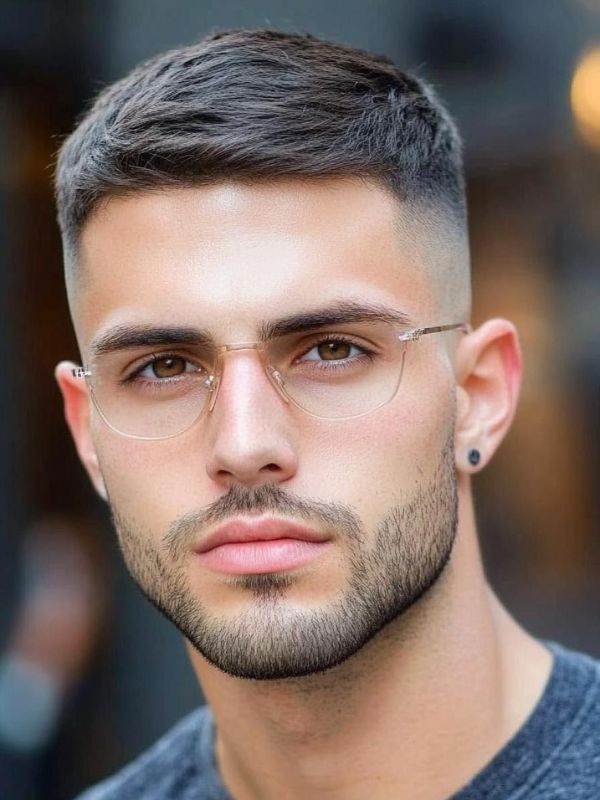
The buzz cut with a low taper gives military precision with civilian style. Instead of uniform length everywhere, the tapered sides add dimension that prevents the look from feeling too harsh. It’s perfect for low-maintenance fade styles that need minimal daily effort beyond a quick face wash.
A short textured crop works beautifully with this fade. The top stays around one to two inches with choppy layers that create movement. Run some light clay through it, mess it up a bit, and you’re done. This clean fade haircut variation suits active lifestyles where you can’t fuss with hair throughout the day.
The ivy league cut remains a classic choice for short hair. It’s essentially a longer crew cut with enough length to part or sweep to the side. Combined with a low taper, you get a gentleman’s haircut that works everywhere from job interviews to wedding receptions. Just add a bit of pomade for shine and control.
Medium-Length Hairstyles That Shine with a Low Taper
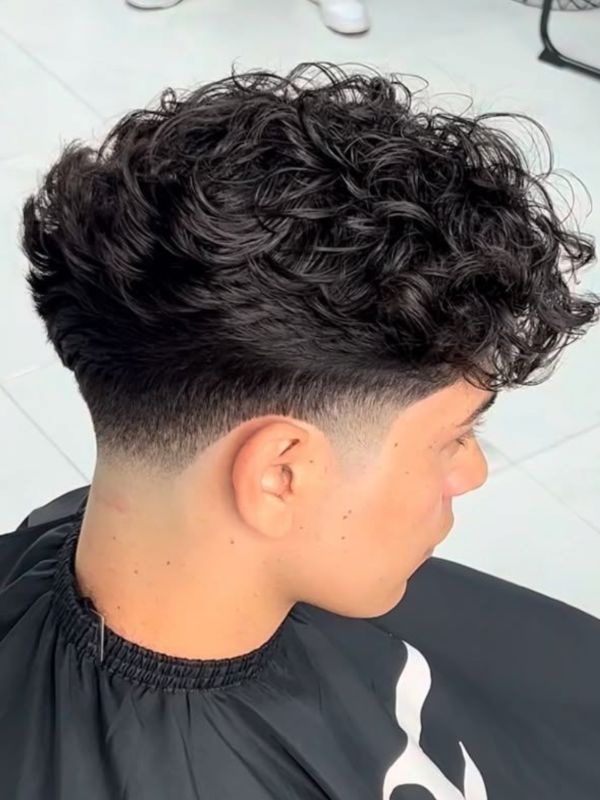
The comb over taper fade brings sophistication without feeling stuffy. Hair on top sits around three to four inches, enough to sweep dramatically to one side with a defined part. The low taper keeps sides clean while the longer top creates that polished, put-together appearance that works in any professional setting.
Medium-length messy styles pair unexpectedly well with the structure a fade provides. Think deliberately disheveled hair on top with controlled sides. This contrast between order and chaos creates visual interest. Use a texturizing spray and finger-style for that effortless look that actually takes two minutes to achieve.
The quiff remains popular at medium lengths, especially when paired with a low taper. Brush hair upward and back, using a blow dryer and styling cream to lock in volume. The tapered sides prevent the style from looking top-heavy while keeping focus on that height and flow up front.
Long Hair and Low Taper: The Perfect Balance
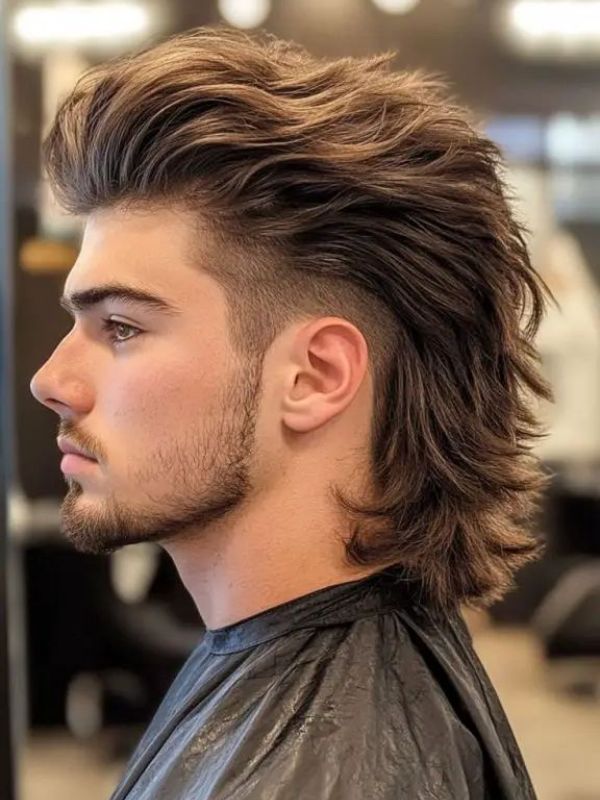
Long hair needs structure to avoid looking unkempt, and that’s where the low taper earns its keep. Keeping length on top while tapering the sides and back creates a mullet-adjacent style that feels current rather than dated. The key is blending—the transition should be smooth enough that you don’t see harsh lines.
A low taper for curly hair with length on top creates stunning dimension. Those natural curls get room to breathe and bounce on top while the tapered sides keep everything from becoming a shapeless mass. This hairstyle contrast and volume approach works especially well for guys with thick, coarse curl patterns.
The slicked-back long style gets a modern upgrade with tapered sides. Instead of the full greaser look, you’re keeping sides neat and professional while letting top hair flow backward. Use a medium-hold pomade that doesn’t make hair crunchy or stiff. The result feels timeless without being stuck in the past.
Low Taper Fades for Curly Hair Types
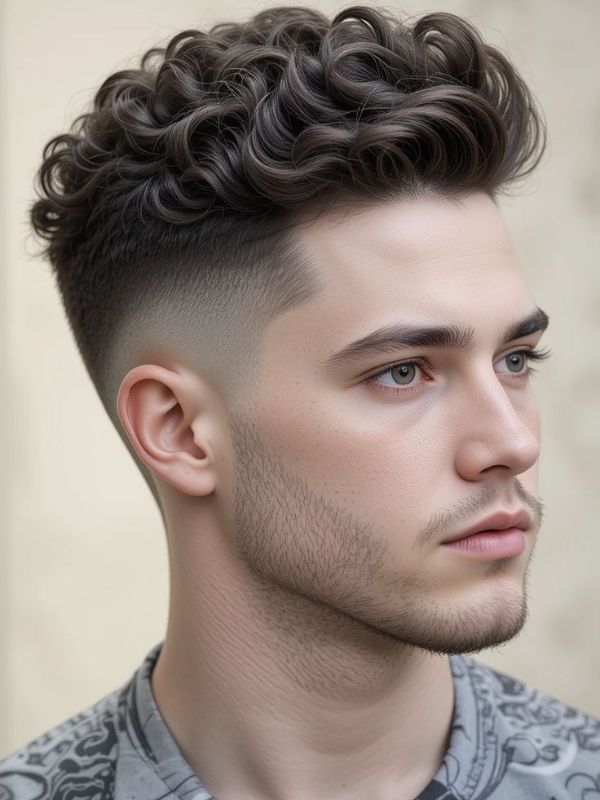
Curly hair with a low taper fade needs the right cutting technique to avoid awkward growing-out phases. Your barber should cut curls dry or barely damp to see their natural pattern. The taper creates a clean neckline taper that defines where curls end and skin begins, preventing that mushroom effect that happens when curls grow wild.
Hair texture enhancement happens naturally when you give curls structure through smart cutting. The fade removes bulk on sides while preserving curl definition on top. For guys with tight coils, this means better shape retention between cuts. For looser curls, it means enhanced bounce without excess volume everywhere.
Maintain curly tapers with sulfate-free products that don’t strip natural oils. Use a leave-in conditioner to keep curls hydrated and defined. Between cuts, touch up the taper edges yourself with clippers if you’re confident, or visit your barber every three weeks for a quick cleanup that keeps lines sharp.
Beards That Match Perfectly with Low Taper Fades
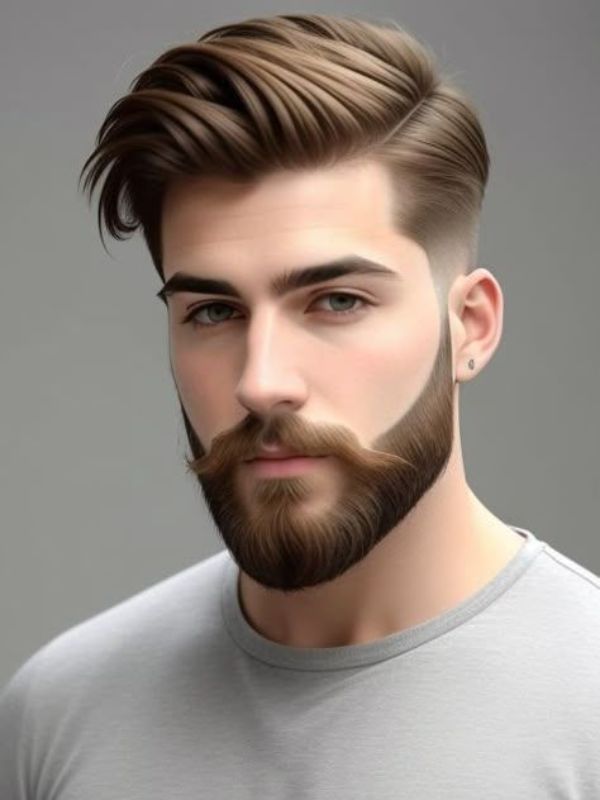
A shaped, maintained beard creates continuity with your taper. The fade naturally leads the eye to your jawline, so keeping facial hair groomed completes the look. Go for a medium-length beard that follows your face shape, tapering it slightly as it moves down your neck to mirror the fade technique.
Stubble works brilliantly with this cut for men who want grooming simplicity. Keep it at a consistent length using a beard trimmer, and make sure the neckline of your beard sits roughly where your fade ends. This creates a unified appearance that looks intentional. The men’s confidence through grooming factor here is real—feeling put together translates to carrying yourself differently.
For guys who prefer clean-shaven, the low taper fade still delivers. The defined lines around your ears and neckline create enough visual interest that you don’t need facial hair to complete the look. Just keep skin moisturized and watch for razor bumps if you’re prone to irritation.
Low Taper Fades for Professional Men
Corporate environments demand subtlety, and this haircut delivers without compromise. The men’s professional hairstyles category loves the low taper because it signals attention to detail without crossing into flashy territory. Pair it with a conservative top style like a side part or textured crop, and you’ve got a haircut that works in any boardroom.
The gradual blend keeps things boardroom-appropriate while still showing you care about your appearance. Unlike high fades or dramatic undercuts that might raise eyebrows in conservative industries, the low taper flies under the radar in the best way. It’s groomed, sharp, and utterly professional.
Banking, law, corporate consulting—these fields all welcome this cut. The trick is keeping top length conservative, usually two to four inches maximum. Style with minimal product for a natural look. Save experimental styles for weekends and stick with classic approaches during work hours.
Maintenance Tips to Keep Your Taper Fresh

Book appointments every two to three weeks for touch-ups. The taper grows out gradually, but maintaining those clean lines requires regular barber visits. Think of it like car maintenance—small regular investments prevent bigger problems down the road. Between cuts, the style still looks decent, but you’ll notice the sharpness fading.
Home maintenance involves keeping your neckline and edges clean. If you’re comfortable with clippers, a quick touch-up on visible areas extends time between barber visits. Use a handheld mirror to check the back, and always go slower than you think necessary. One mistake requires a barber fix anyway.
Product choices matter for longevity. Heavy waxes and gels can build up and make hair look grimy. Stick with lightweight matte clays or creams that wash out easily. Shampoo two to three times weekly, conditioning after each wash. On non-wash days, rinse with water to refresh without stripping natural oils.
How to Ask Your Barber for a Perfect Low Taper
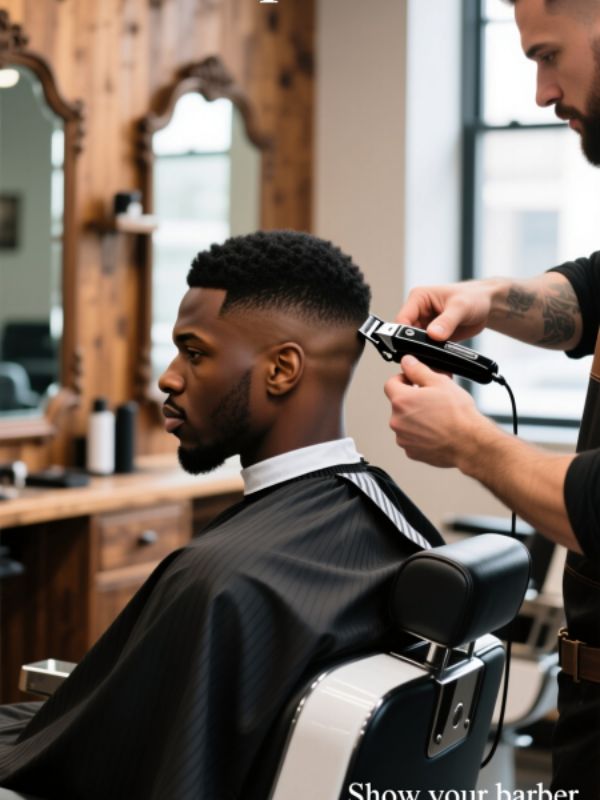
Walk in with reference photos on your phone. Don’t just say “low taper fade” and hope for the best. Show your barber exactly what you want regarding length on top, where the taper should start, and how gradual the blend should be. Communication prevents disappointment and ensures you both share the same vision.
Use specific terminology: “I want a low taper that starts above my ears, blending into about three inches on top. Keep the transition gradual, not skin-tight at the bottom.” Mention your styling habits too—if you never use product, tell them. If you love texture, ask for layers. These details help barbers customize the cut.
Discuss hair growth patterns during your consultation. Cowlicks, thinning areas, weird growth directions—these all affect how a cut grows out. A skilled barber adjusts techniques based on your unique hair behavior. Building a relationship with one barber who learns your hair over time beats bouncing between random shops.
Common Mistakes to Avoid with Low Taper Haircuts
Going too short too fast ruins the gradual effect. Some guys walk in wanting drama and push for aggressive tapering that contradicts the style’s whole point. The subtle fade vs skin fade distinction exists for a reason—know which one you actually want before sitting in the chair.
Neglecting the top while obsessing over the taper creates imbalance. The fade is just the foundation, not the entire haircut. Make sure you’re styling and maintaining the top portion with equal attention. A perfect taper means nothing if the hair on top looks limp, greasy, or shapeless.
Skipping regular trims leads to awkward grow-out phases where the taper loses definition. Unlike buzz cuts that grow out evenly or long hair that just gets longer, tapers need consistent maintenance to preserve their shape. Budget time and money for regular appointments—it’s part of committing to this style.
Low Taper Fade vs. Skin Fade – Which One Suits You
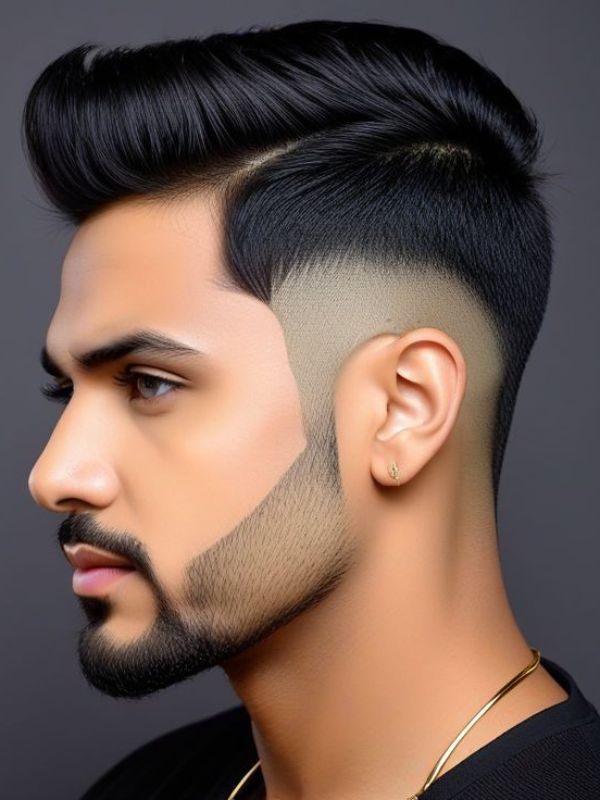
The low fade vs taper fade debate comes down to contrast preference. Taper fades gradually go shorter but leave some hair all the way down to your natural hairline. Skin fades, also called bald fades, blend down to bare skin for maximum contrast. Skin fades demand more maintenance and create a sharper, more dramatic look.
If you work in conservative environments or prefer understated style, the taper is your move. It’s subtle enough for anywhere while still providing that cleaned-up appearance. Skin fades work better for guys who want their haircut to make a statement and don’t mind more frequent barber visits.
Consider your hair growth speed too. Fast-growing hair makes skin fades look messy quickly, while tapers maintain a presentable appearance longer. Skin texture matters as well—guys prone to razor bumps or ingrown hairs might struggle with skin fades but handle tapers just fine.
FAQs About Low Taper Fade Haircuts
What exactly is a low taper fade?
It’s a gradual blend starting above the ears, keeping hair length for a clean, natural finish.
How often should I get my low taper fade trimmed?
Every 2–3 weeks keeps it sharp and well-defined.
Can I get a low taper fade with any hair type?
Yes, it works perfectly with straight, wavy, or curly hair.
What’s the difference between a taper and a fade?
A taper shortens gradually, while a fade blends closer to the skin.
What products work best for styling a low taper fade?
Use matte clay for texture or pomade for shine and control.
Final Thoughts: Why Every Man Should Try a Low Taper
The low taper fade meaning boils down to accessible style that works across age groups, professions, and personal aesthetics. It’s not trying too hard, doesn’t require expert styling skills, and looks sharp even when you’re rushing out the door. This haircut respects your time while upgrading your appearance.
Its versatility means you’re never locked into one look. Today’s side part can become tomorrow’s textured crop without changing the underlying cut. The taper provides a consistent foundation that supports experimentation on top. That flexibility alone makes it worth trying, especially if you get bored with hairstyles quickly.
Whether you’re 18 or 58, in tech or teaching, this cut simply works. It bridges the gap between too trendy and too boring, landing in that sweet spot of timeless style. Give it a shot—worst case, hair grows back. Best case, you’ve found your signature look.

Mubeen, the expert writer behind Hair Hipe, brings over 5 years of experience in men’s hair cutting. Passionate about modern styles and precision grooming, he shares tips, trends, and techniques to elevate every haircut.
